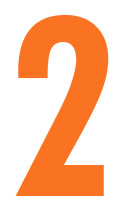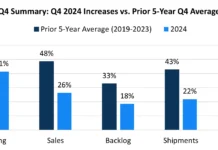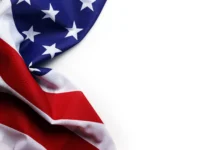by Chris Kuehl, managing director, Armada Corporate Intelligence
Editor’s Note: This article was written on April 16, 2020.
The status of the global economy has altered just a bit from what it was just a couple of months ago. It seems that all those standard concerns regarding inflation and deflation, interest rates, consumer confidence, industrial output and just about everything else that once preoccupied the minds of the economists have faded from view – replaced by reaction to the modern day plague of COVID-19. The focus now is on the “lockdown recession,” an economic catastrophe that is unparalleled in its origins and complexity. We all know by now that nearly the entire world has been brought to a standstill by the effort to control the spread of the virus, and every day brings more evidence of that economic impact. There have been over 22 million layoffs in just three weeks, retail sales plunged by 8.7% and oil prices have fallen to below $20 a barrel. The stock market has lost all the gains made in the last five years, industrial production has ground to a halt, and much of the damage has yet to be catalogued. Given that these cascades of bad news come every day, it seems more useful to try to focus on what the economy might look like when this crisis has been declared at an end.
That aftermath is likely to look very different from those that have followed previous recessions, such as the one the world endured in 2008-2009. This one has been termed a “lockdown recession” because it was entirely artificial – a recession brought to you via government edict. Prior to the arrival of COVID-19, the economy of the US was in pretty fair shape. Nobody was expecting a particularly strong year, but growth was at 2.1% at the end of 2019 and, until the middle of March, the GDP growth rate had been holding at about that 2.1% level. The bottom dropped out of the economy with the announcement of the lockdown, and now Q1 estimates are as low as -6% to -10%. Those who are venturing a prediction for the second quarter are asserting that GDP growth could be as low as -20%. On the other hand, there are those who point out that Q2 numbers will be collected through June, opening the door to a possible rebound at the end. Most assert there will be a recession (formally), as there will be negative growth through the first two quarters.
To escape a recession that affects the entire year, there will have to be a return to the economic conditions that existed prior to the outbreak of the virus.
In fact, there will have to be more growth and more activity than had existed prior to the pandemic if affected business is to recover a significant percentage of what has been lost. How likely is this? It will all come down to timing and consumer attitude going forward.
Three economic scenarios
 There are three scenarios under discussion at this point. The first is the May Rebound. This assumes the lockdown is lifted early in May and that recovery can be underway by the end of the month. This rebound then picks up speed in June and July and allows for a significant recovery in the last two quarters of the year. The estimate is that GDP will shrink by around 1.6% over what it was at the end of 2019. Given that 2019 ended with a growth rate of 2.1%, a decline of 1.6% leaves the US economy with a 2020 growth rate of 0.05%. That is obviously a miserable rate of growth – and is as slow as the economy has been since the recession of 2008 – but, it is not an actual, formal recession (as defined by the National Bureau of Economic Research as two consecutive quarters of negative growth). This scenario delivers negative growth in Q1 and very slow growth in Q2, while Q3 and Q4 return to close to 2.0%.
There are three scenarios under discussion at this point. The first is the May Rebound. This assumes the lockdown is lifted early in May and that recovery can be underway by the end of the month. This rebound then picks up speed in June and July and allows for a significant recovery in the last two quarters of the year. The estimate is that GDP will shrink by around 1.6% over what it was at the end of 2019. Given that 2019 ended with a growth rate of 2.1%, a decline of 1.6% leaves the US economy with a 2020 growth rate of 0.05%. That is obviously a miserable rate of growth – and is as slow as the economy has been since the recession of 2008 – but, it is not an actual, formal recession (as defined by the National Bureau of Economic Research as two consecutive quarters of negative growth). This scenario delivers negative growth in Q1 and very slow growth in Q2, while Q3 and Q4 return to close to 2.0%.
What will it take for this scenario to develop? First, the COVID-19 infection rate will have to peak as predicted – late April. This means a leveling off of new infections, hospitalizations and fatalities. This has occurred in China, South Korea, Taiwan and Singapore, as well as several of the European nations. Some US states are reporting a similar experience. The second thing that has to happen is a return of consumer confidence. If a restart is declared – but people still resist shopping, dining out, traveling and going to work – there will be no robust recovery. Third, the government will have to continue to offer assistance to affected business and to the population affected by job loss and economic dislocation. Thus far, the assessment holds that people will resume their old patterns fairly quickly, but there will be exceptions in populations that have been deemed vulnerable and in regions that have been hit hard.
 The second major scenario is the Summer Rebound. This version holds that recovery efforts will not begin until at least June and possibly not until July. The lockdown stays in place through May and into June, and then slowly retreats through the summer. If this is the scenario, there will be a 5.5% decline in the GDP – and that takes the whole of 2020 into recession territory. This likely would mean that Q1 and Q2 would be in severe recession, with GDP losses near 6.0% to 10.0%. The Q3 numbers would likely struggle back into positive growth territory, but that will not be robust enough to counter the impact of the previous quarters. The estimate is that Q4 will start to approach normal growth of 2.0%, but that will not be enough to keep the year out of recession.
The second major scenario is the Summer Rebound. This version holds that recovery efforts will not begin until at least June and possibly not until July. The lockdown stays in place through May and into June, and then slowly retreats through the summer. If this is the scenario, there will be a 5.5% decline in the GDP – and that takes the whole of 2020 into recession territory. This likely would mean that Q1 and Q2 would be in severe recession, with GDP losses near 6.0% to 10.0%. The Q3 numbers would likely struggle back into positive growth territory, but that will not be robust enough to counter the impact of the previous quarters. The estimate is that Q4 will start to approach normal growth of 2.0%, but that will not be enough to keep the year out of recession.
To get this “U”-shaped recession, there will have to be setbacks and delays. The virus will remain pervasive and persistent, and the peak will be delayed until sometime in May or even June. The consumer will remain very cautious and unwilling to accept the “all clear” declaration. Business will be reluctant to bring people back to old work patterns, and there will continue to be severe declines in sectors connected to travel, leisure and entertainment. There also would have to be setbacks in nations that have been moving towards normalcy. The Asian states already have had to deal with secondary infections as people have traveled back home, and it is not clear whether people who have been infected once can be considered immune to reinfection.
 The third scenario is by far the most miserable, as it asserts there will not be a recovery period until the end of the summer or into fall. This means a GDP decline of between 6.0% to 10.0%, and that would be worse than the 2008 decline. Recovery would not even start until the end of Q3 or perhaps Q4. The chances of a retail boom fade and the travel/tourism season will have passed. This is the “L” recession, and it drags on for years. The majority of the unemployed stay in that situation for an extended period of time. One of the worst-case assessments came from the St. Louis Fed, which predicted a loss of over 50 million jobs if recovery is delayed into the fourth quarter. To put that in some perspective, the Great Recession of 2008 cost around 9 million jobs. As grim as these jobless numbers are, it is important to understand that some 80% are expected to return almost immediately upon the lifting of the lockdown, but that still leaves a gaping hole in the job market.
The third scenario is by far the most miserable, as it asserts there will not be a recovery period until the end of the summer or into fall. This means a GDP decline of between 6.0% to 10.0%, and that would be worse than the 2008 decline. Recovery would not even start until the end of Q3 or perhaps Q4. The chances of a retail boom fade and the travel/tourism season will have passed. This is the “L” recession, and it drags on for years. The majority of the unemployed stay in that situation for an extended period of time. One of the worst-case assessments came from the St. Louis Fed, which predicted a loss of over 50 million jobs if recovery is delayed into the fourth quarter. To put that in some perspective, the Great Recession of 2008 cost around 9 million jobs. As grim as these jobless numbers are, it is important to understand that some 80% are expected to return almost immediately upon the lifting of the lockdown, but that still leaves a gaping hole in the job market.
To see this scenario play out will require almost everything going wrong. The virus fails to fade until late in the summer and, by the time it does, there are perhaps 100,000 fatalities and perhaps five times that many serious cases. At the time of this writing, there were around 22,000 fatalities. Getting to that grim prediction would be very hard. Most importantly from an economic recovery point of view, the consumer would remain extremely wary and unwilling to resume old habits. It would be likely that many businesses would remain shuttered even if allowed to reopen. They would expect few customers and would prefer to wait for a more secure moment.
The retreat on the lockdown will likely be in stages and slow. The first step might be opening more retail outlets, as there already are many stores that have been deemed essential. The second step would likely include service establishments and restaurants, as it would be assumed that steps could be taken to make these establishments less risky. The third phase would be opening up to conferences and meetings, as there would be ways to adopt protocols to protect attendees. The final phase would be the return of events and venues that draw large crowds. The bottom line is that normal will look very different than it once did.
Chris Kuehl is managing director of Armada Corporate Intelligence. Founded by Keith Prather and Chris Kuehl in January 2001, Armada began as a competitive intelligence firm, grounded in the discipline of gathering, analyzing and disseminating intelligence. Today, Armada executives function as trusted strategic advisers to business executives, merging fundamental roots in corporate intelligence gathering, economic forecasting and strategy development. Armada focuses on the market forces bearing down on organizations.
More information: www.armada-intel.com




